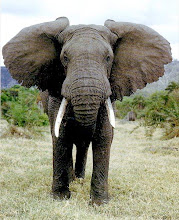The Seminoles who stayed in the Everglades, known as the Seminole Tribe of Florida, lived off the land, which unfortunately kept getting taken away by settlers. As a result, there was very little land left to build a community on, and even scarcer resources with which to earn a living. If natural resources such as oil or coal did exist on Seminole land, the tribe could have gotten contracts with big industries to mine the coal or drill for the oil, and in return, a certain percent of the profits would go to the tribe. However, the white settlers took the best land, containing a vast majority of the natural resources, and left the rest for the tribe. So, realizing the fascination that many people held for their "savage" way of life, the Seminoles began a tourism business. The tribe gave tours of their village and the surrounding Everglades. For souvenirs, the women sold arts and crafts, native beadwork, and clothes. Seminole men did alligator wrestling for the tourists. It started out as a sign of manhood, but since it was popular with the tourists, it soon became a sport used to make money. Also, Native Americans in general did not understand the concept of making money in the current society. They had always traded for anything they needed, or gotten it off their land. They did not understand the concept of "owning" a piece of land and the resources on it. To them, no one owned anything; everything was shared and taken only when needed. The federal government tried to start up a business of cattle raising for the Seminole Tribe of Florida. In 1936 they shipped 500 head of cattle to the tribe. The government provided services such as pasture improvement, marketing, and breeding. Cattle were given only to male Seminoles who lived on designated federal reservations. Consequently, the tribe became reliant on government financial aid and technical assistance. The financial aid was needed to help build the pastures and buy feed, the technical assistance was needed to care for the cattle and find buyers. This dependency forwarded the governments' mindset that Native Americans could not exist without government support, and that they can be transformed into "civilized" farmers.
Subscribe to:
Post Comments (Atom)

No comments:
Post a Comment